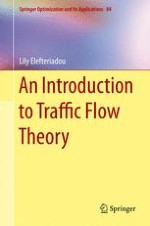2014 | OriginalPaper | Buchkapitel
2. Modeling Vehicle Interactions and the Movement of Groups of Vehicles
verfasst von : Lily Elefteriadou
Erschienen in: An Introduction to Traffic Flow Theory
Verlag: Springer New York
Aktivieren Sie unsere intelligente Suche, um passende Fachinhalte oder Patente zu finden.
Wählen Sie Textabschnitte aus um mit Künstlicher Intelligenz passenden Patente zu finden. powered by
Markieren Sie Textabschnitte, um KI-gestützt weitere passende Inhalte zu finden. powered by
